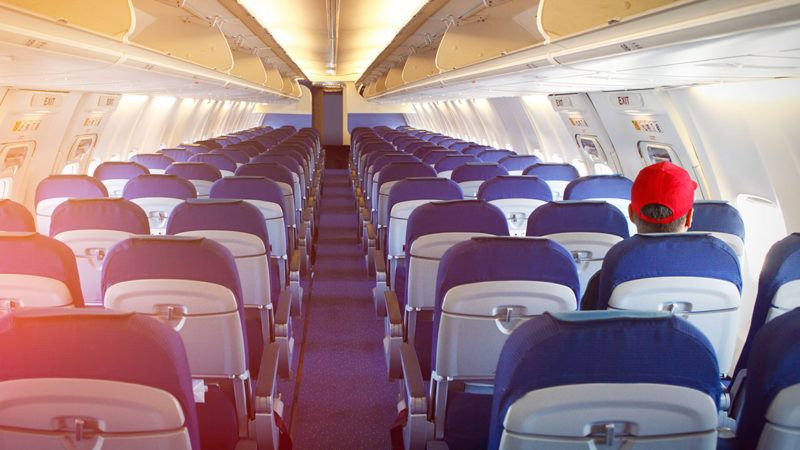$75 Billion in Band-Aids Won't Cure Ailing Airlines
Airlines keep claiming they need a second bailout to bring back 35,000 furloughed employees. Don't buy their argument.

Regal Cinemas announced in early October that it will temporarily close all 536 of its U.S. locations as the COVID-19 pandemic continues to keep customers away. This move affects about 40,000 employees across the country. Yet nobody in Congress is talking about a bailout for theaters.
Now compare that with the airline industry.
In April, Congress passed a $50 billion bailout for the airlines, including $25 billion in subsidized loans and another $25 billion meant to keep most airline workers employed until the end of September. As predicted, since consumers were not yet ready to fly, this taxpayer-funded band-aid only postponed the inevitable.
American Airlines and United Airlines furloughed 32,000 employees in the fall, claiming they had no choice without another $25 billion. So House Speaker Nancy Pelosi (D–Calif.), President Donald Trump, and many Senate Republicans drew the obvious conclusion: The bailout should be bigger.
Advocates of the additional $25 billion bailout say a new injection of funding will be used to restore 35,000 jobs. But as my colleague Gary Leff and I show in new research published by George Mason University's Mercatus Center, the math doesn't add up.
Assuming an average annual salary of $100,000, supporting 35,000 airline employees for six months—the time covered under the new proposed bailout—should cost a total of $1.7 billion. Yet airlines are asking for $25 billion, which works out to $715,000 per job temporarily saved. A more plausible explanation is that—as with the first bailout—airlines are planning on using taxpayers' money, rather than their own, to cover the salaries of those who are at risk of furlough and the salaries of employees they have no intention of furloughing.
Airline representatives have argued that another bailout would not only help them bring back furloughed workers but also protect workers who went on leave back in April to avoid termination. Don't buy it. First, there is no indication that airlines plan to furlough those people. If they did, they would have had to notify them 60 days in advance, which they have not done. Second, the concern that airlines will make additional, yet-to-be-announced furloughs strengthens the argument against payroll support. If airlines feel a need to furlough on-leave workers who aren't currently costing them a dime, that suggests the industry is not expecting to do better anytime soon.
Some companies are taking a different approach to retaining their employees. Southwest Airlines, for example, is asking its labor unions to accept pay cuts through the end of 2021 to prevent furloughs and layoffs. Singapore Airlines has done the same.
Airlines also have access to capital markets and have many durable assets they can sell or use as collateral to secure additional financing, even during a crisis. And even without sacrificing these lucrative assets, airlines can turn to their credit-card-issuing partners for liquidity, as they have in response to past financial challenges.
Sadly, as long as demand for air travel remains deflated, there will be no way for airlines to avoid slimming down their payrolls. Subsidies provided under the cover of payroll programs are not necessary to protect an industry that can, and perhaps should, pursue restructuring through bankruptcy. Airlines can continue to fly safely during this process as a judge imposes a stay on creditors' claims and gives the carriers breathing room until consumers are ready to come back.
Unlike special favors granted by Congress, the bankruptcy process is equitable. It shifts the cost of the crisis onto airline investors, who make good returns during good times in exchange for shouldering the decreased value of their investments during bad times, instead of taxpayers. Without another bailout, the skies that the airlines fly will be fair as well as friendly.


Show Comments (33)